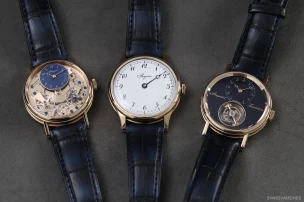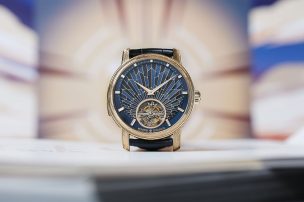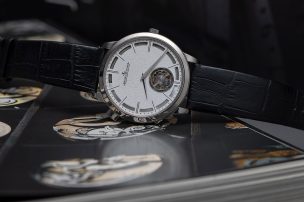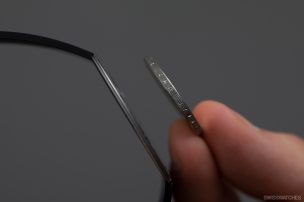
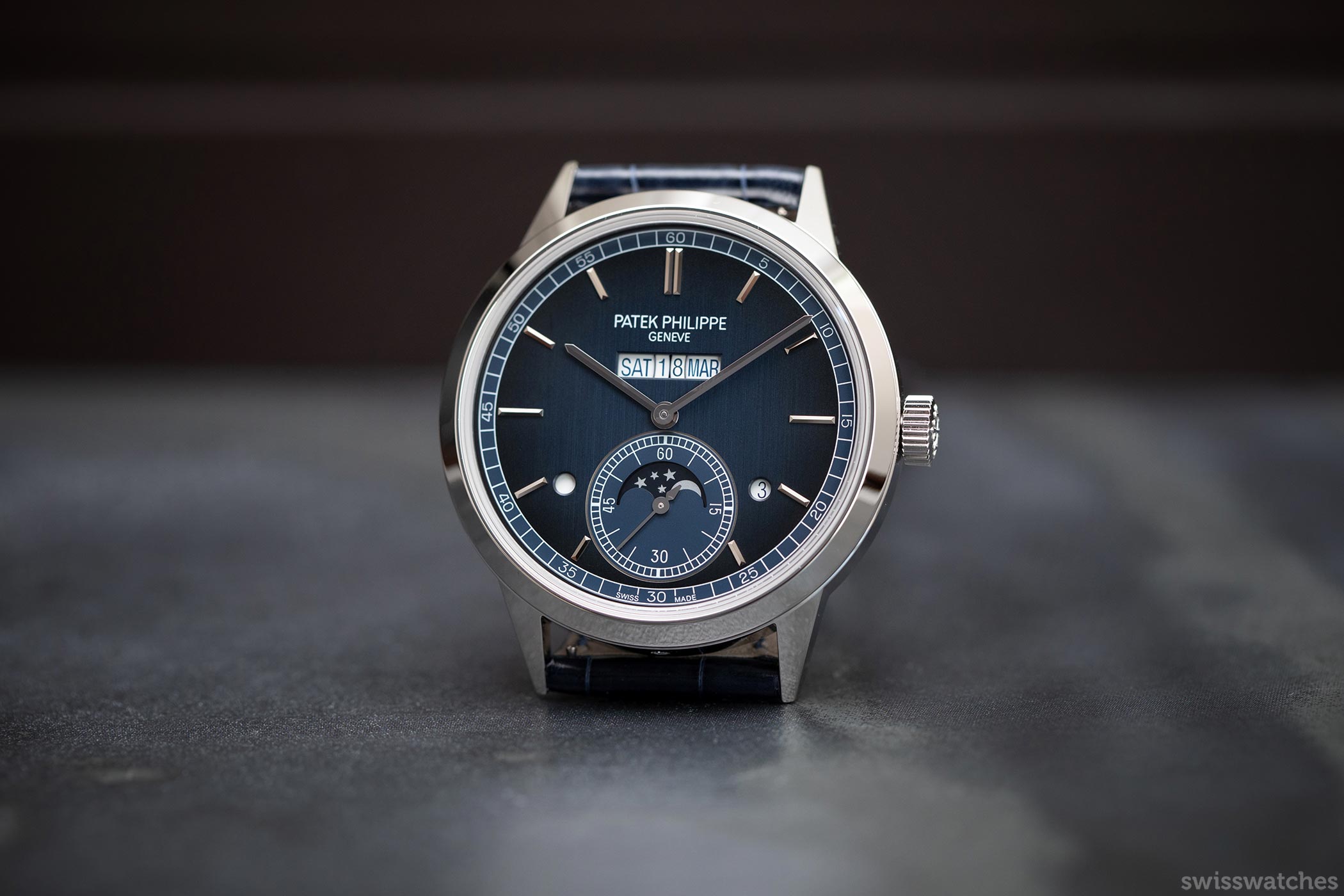
Patek Philippe Reference 5236P: A New In-Line Perpetual Calendar
If, in these demanding times, you are searching for beauty, good in the world, and proof of humanity’s constant striving for improvement, look no further. The new Reference 5236P marks the return of a pure perpetual calendar into the Patek Philippe collection. For the first time, we have a wristwatch displaying the day, date and month all on one level.
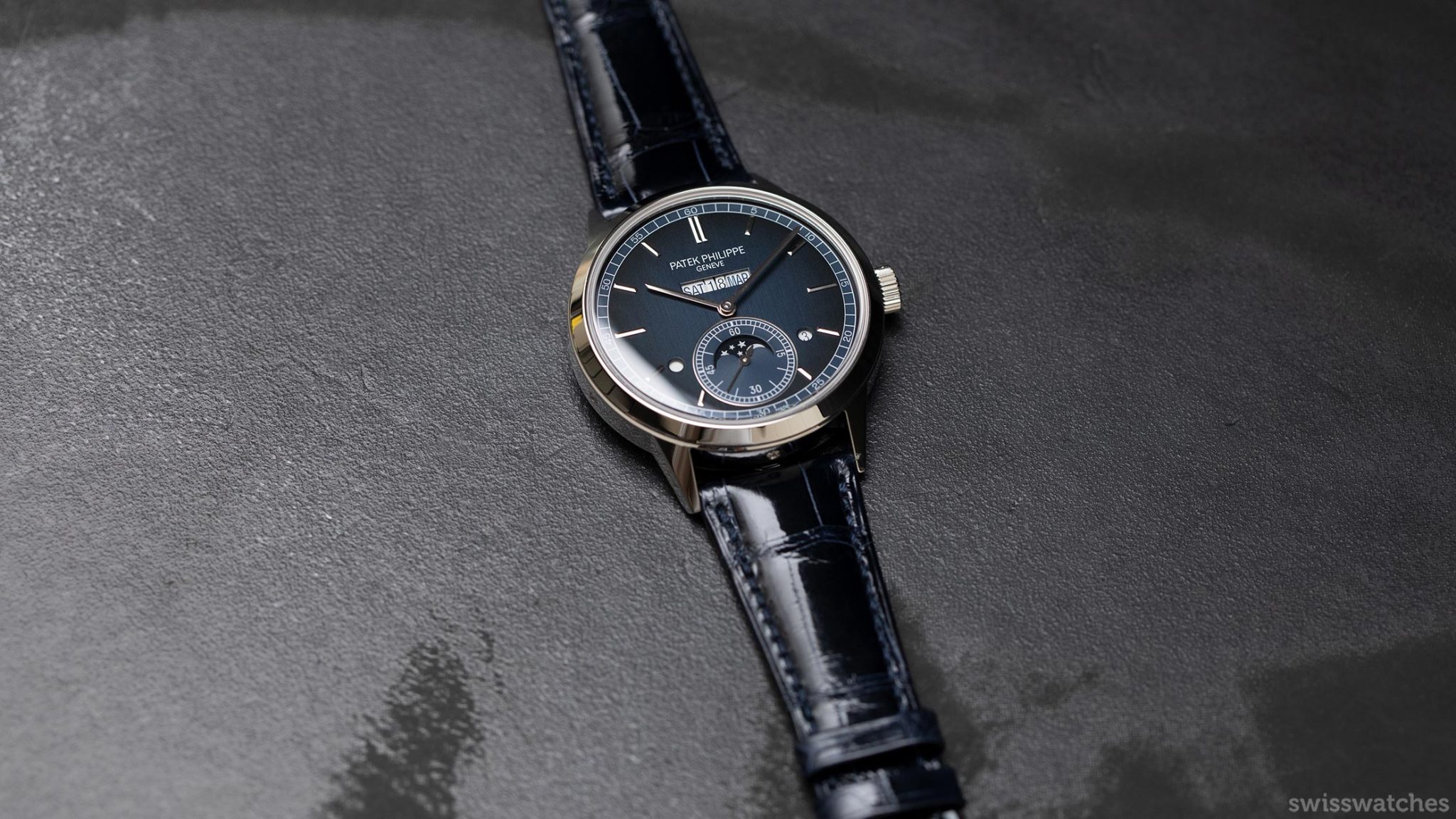
A great heritage
When the words “Patek Philippe”, one almost always automatically thinks “perpetual calendar”. No manufacture is as closely associated with the development of this complication as the Geneva-based brand. The first wristwatch with a perpetual calendar: a Patek Philippe from 1925, No. 97’975. The first retrograde perpetual calendar from 1937: a Patek Philippe Reference 96 No. 860’182. The first perpetual calendar produced in (admittedly small) series also came from Patek Philippe – the Reference 1526.
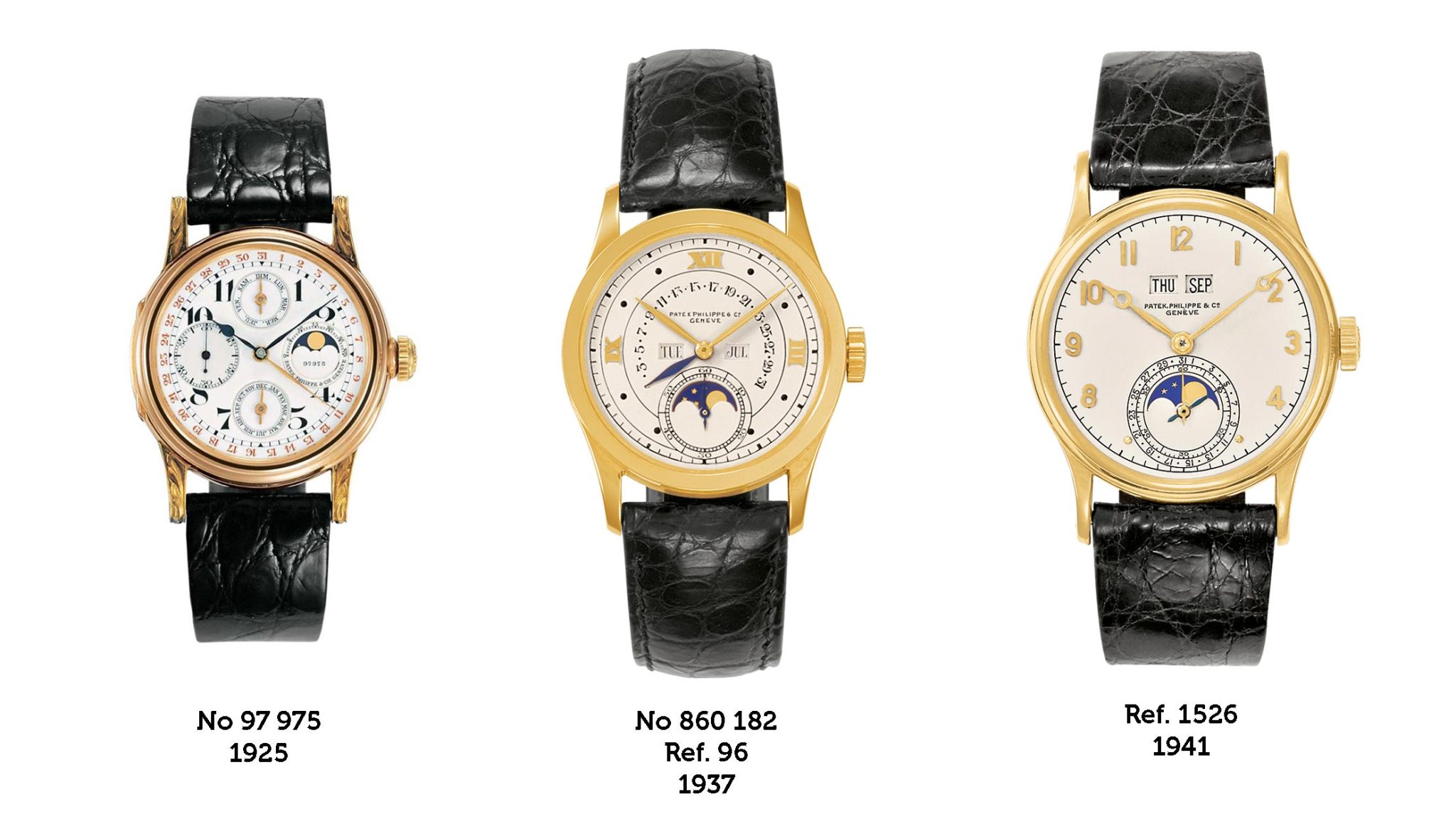
One could make this list even longer, from the defining Patek chronographs with perpetual calendar, to the most elaborate Grandes Complications such as the Grandmaster Chime. But at its core, the most important thing to note is this; a new Patek Philippe perpetual calendar is never just a watch. Rather, it is the latest addition to an immensely elite family of timepieces – for which expectations are correspondingly high.
The novelty: Reference 5236P
The latest addition to this family is the Reference 5236P, whose 41.3 mm platinum case, as well as the dial’s aesthetic with a vertical satin finish, is the most recent member to join a line of ancestors with the current annual calendar with regulator display – Reference 5235. The calibre in the new 5236P is also an evolution of the 31-260 REG QA in that watch – but more on this later.
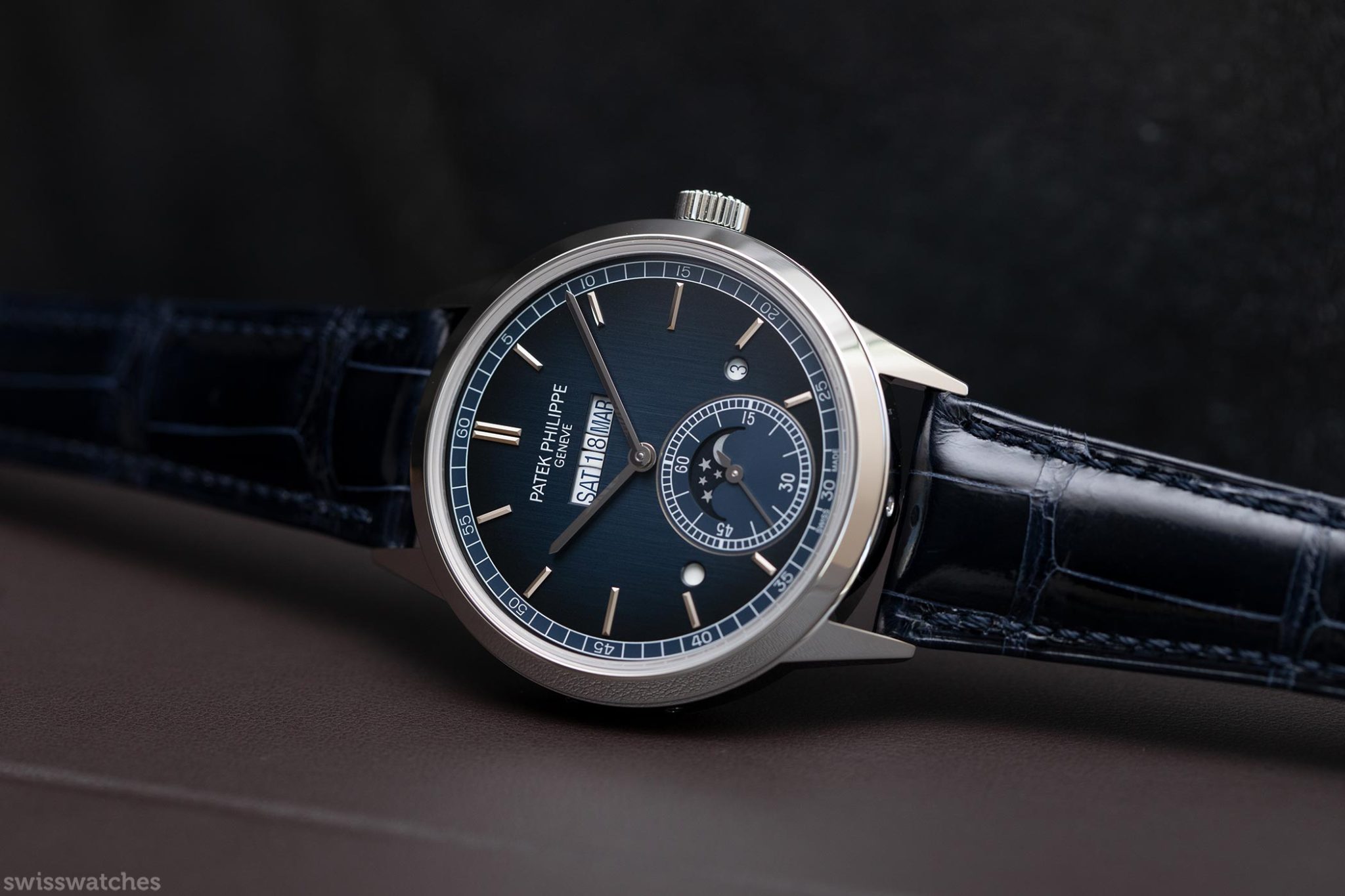

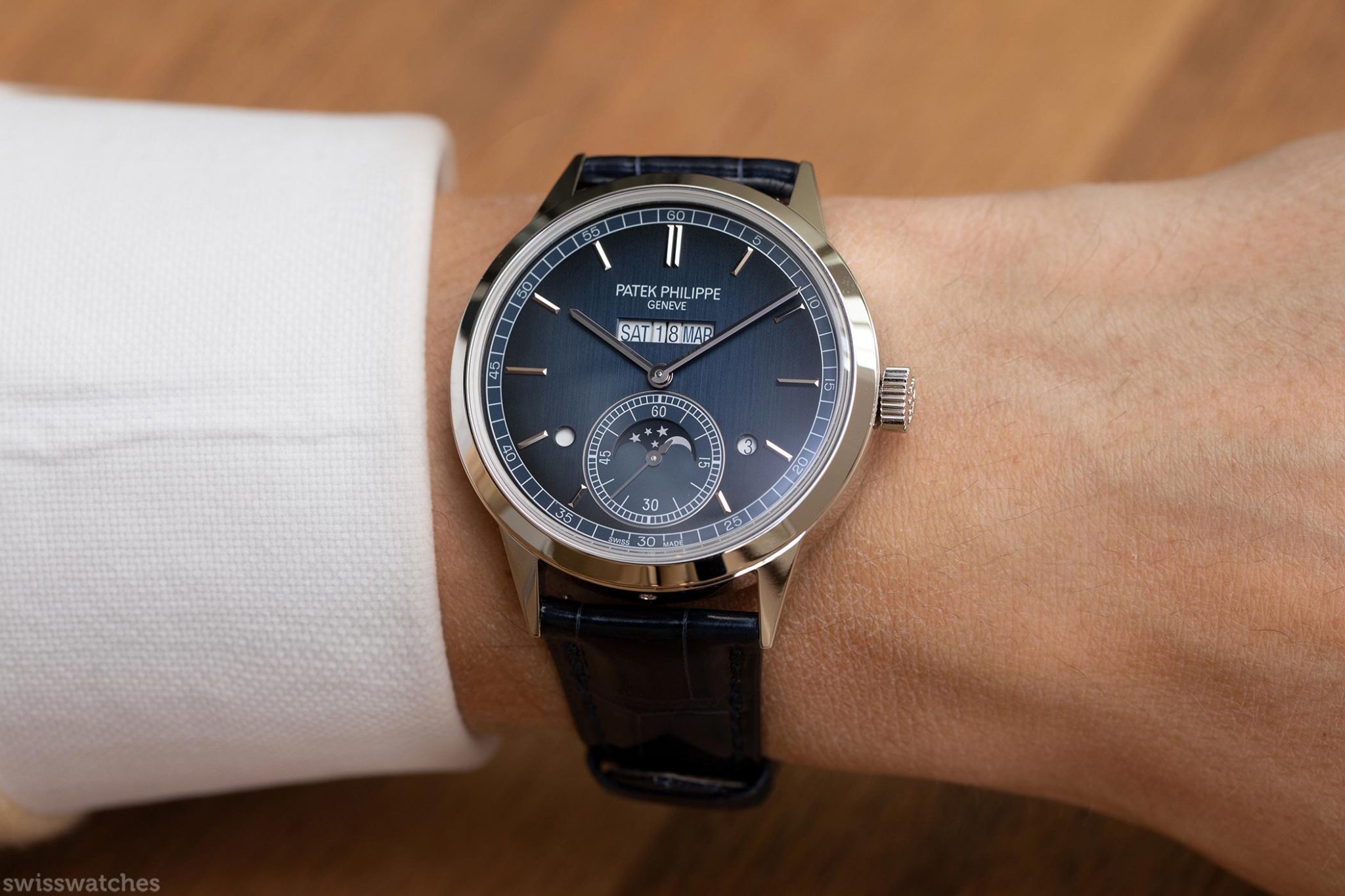
First appearing in 2011, the design of the Reference 5235 takes its inspiration from historic pendulum clocks. It was so unique and special upon its release that it was actually pretty controversial amongst collectors. This annual calendar never managed to become a universally beloved reference in people’s hearts. Nevertheless, it ultimately passed the test of time with flying colours. There is now a by no means small circle of fervent fans of its look, which can be seen as the most modern interpretation of a classic Patek Philippe.
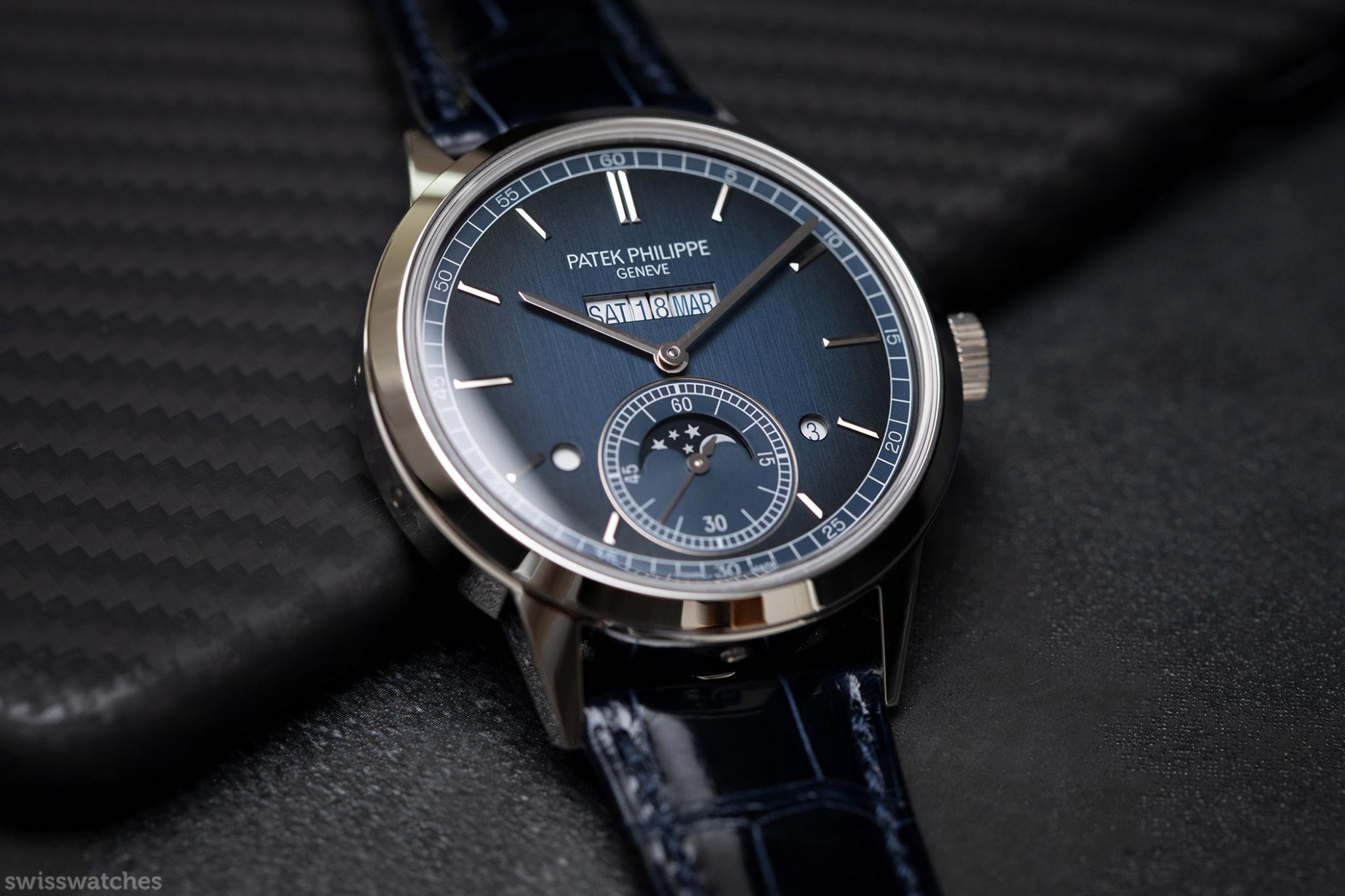

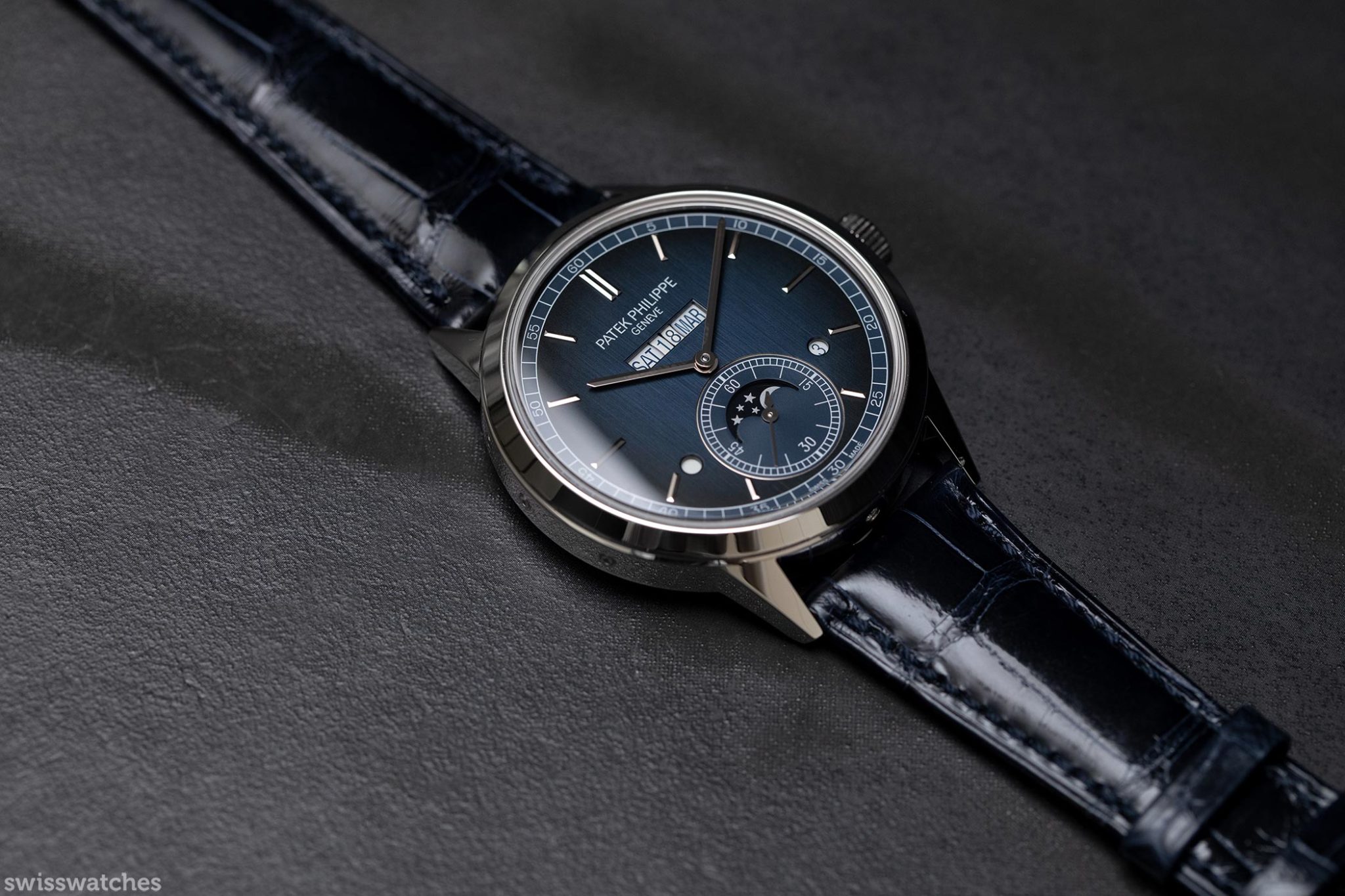
A new way of displaying the calendar
As a perpetual calendar with moonphase in deep dark blue – now a classic colour combination for platinum models of the maison – its design is once more a triumph. At six o’clock, the small seconds frame the moonphase. Meanwhile at twelve o’clock lies the day, date and month – all in a single window. This form of display clearly distinguishes the 5236P from both the similar annual calendar and pretty much all other watches. For example, on Patek’s 5270 perpetual calendar chronograph, two windows display only the day and the month. Meanwhile, the date lies on a separate subdial, framing the moonphase.
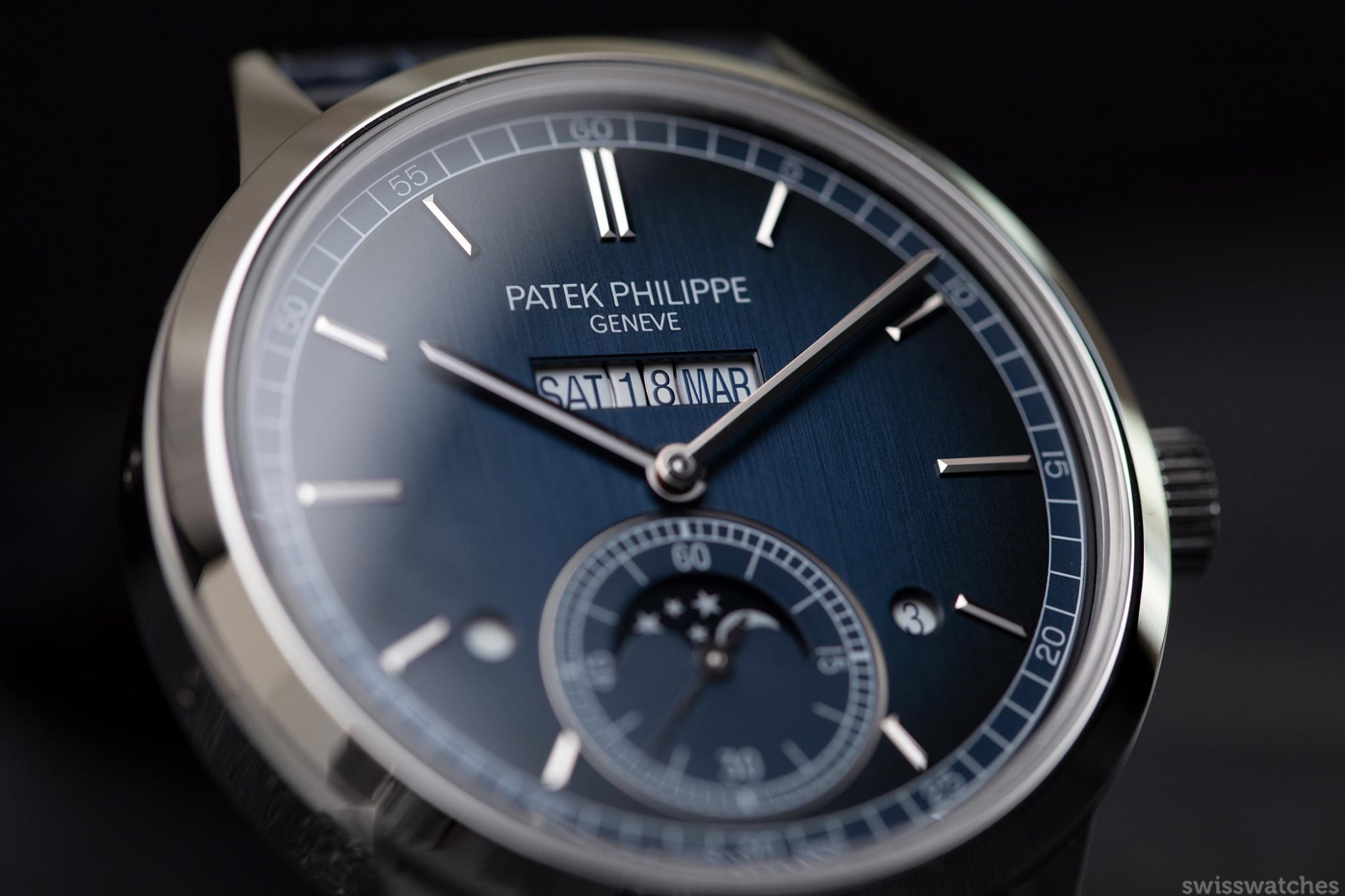
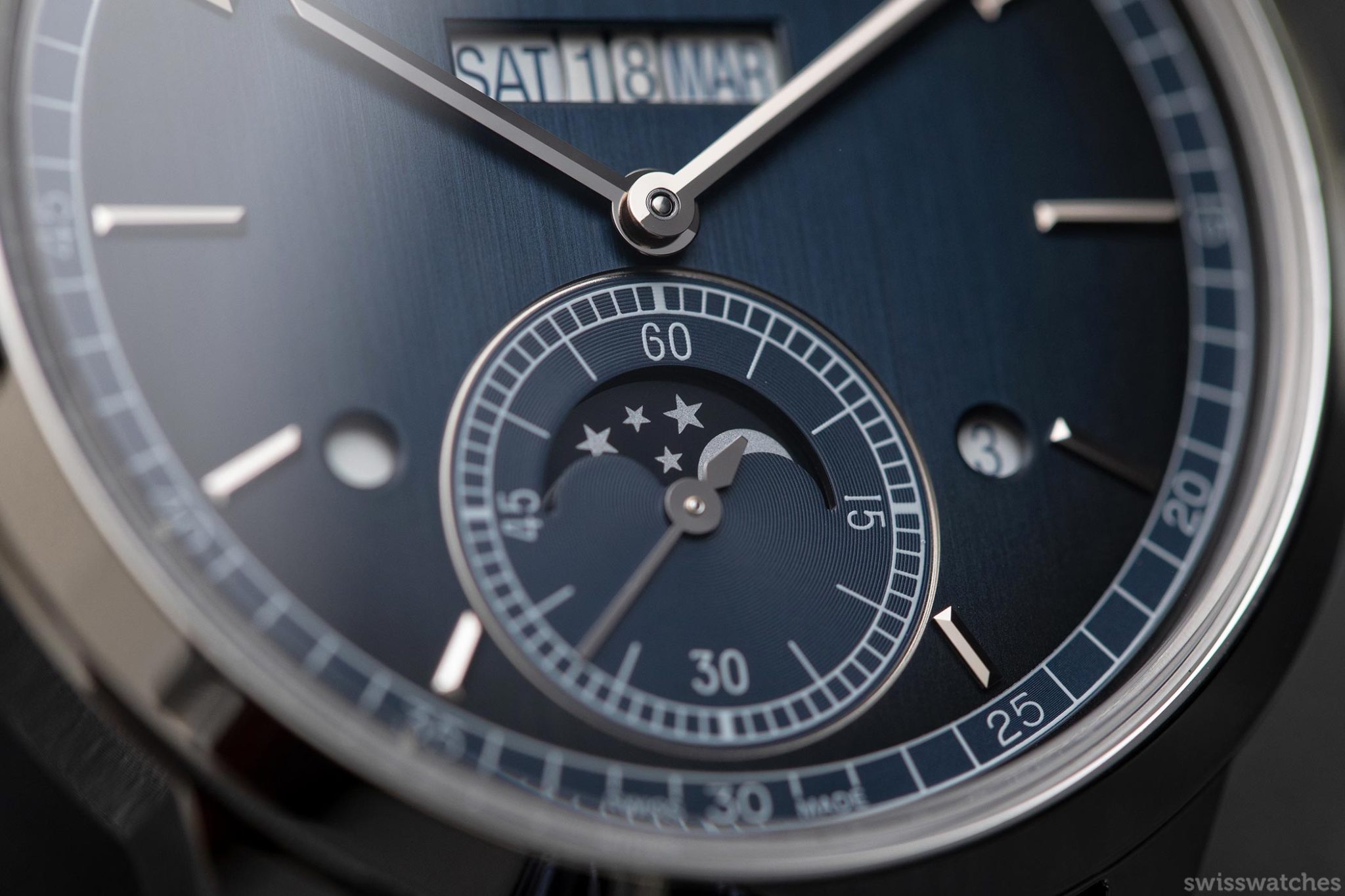
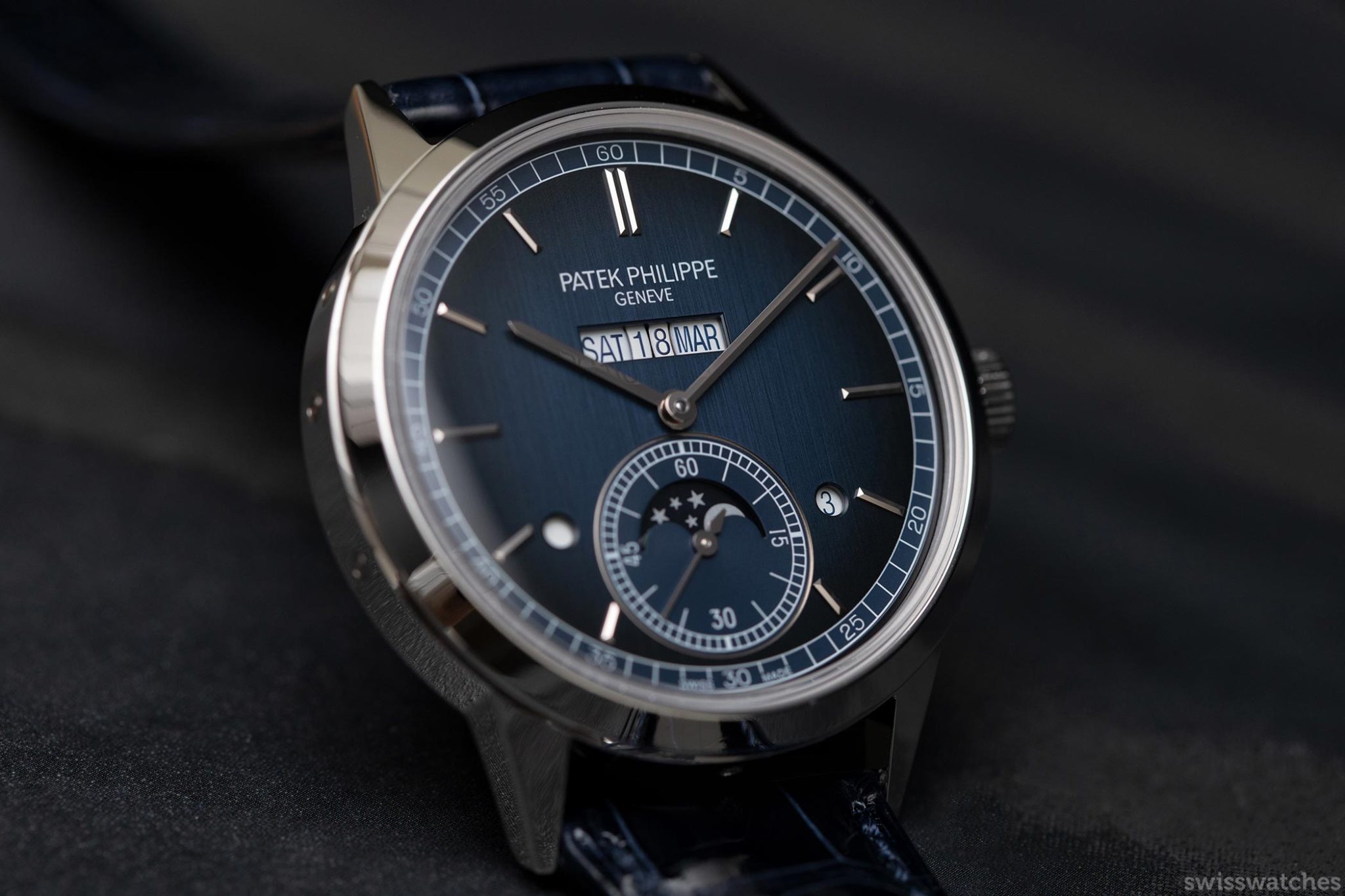
By contrast, A. Lange & Söhne present the date overly clearly, using individual windows, and this is basically part of the brand DNA. Yet at the same time, they avoid using windows for additional information. It’s a similar story at Vacheron Constantin, which prefers a classic presentation with various subdials and avoids windows whenever possible. Only the likes of chronographs with perpetual calendars really struggle to avoid them.
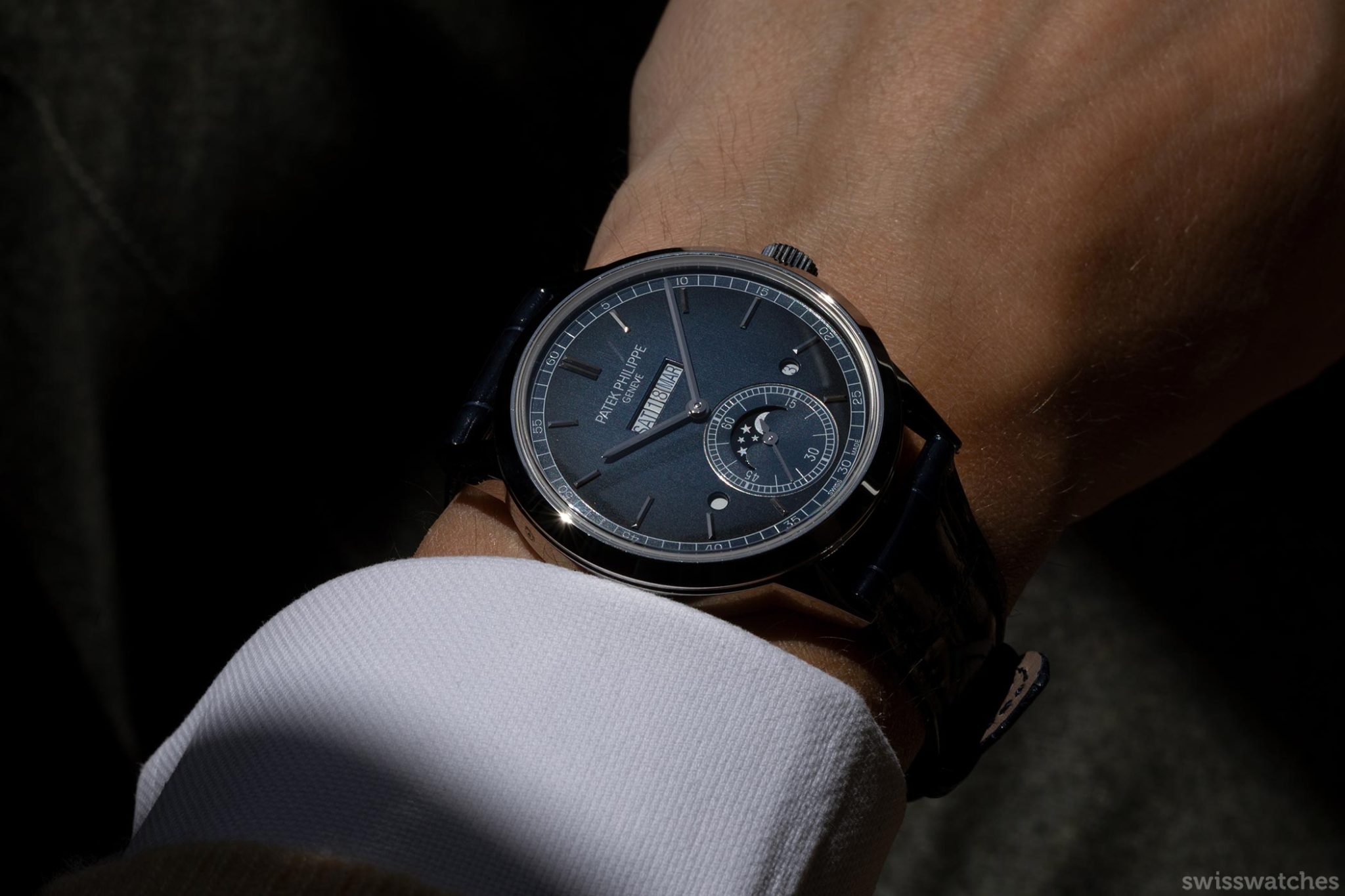
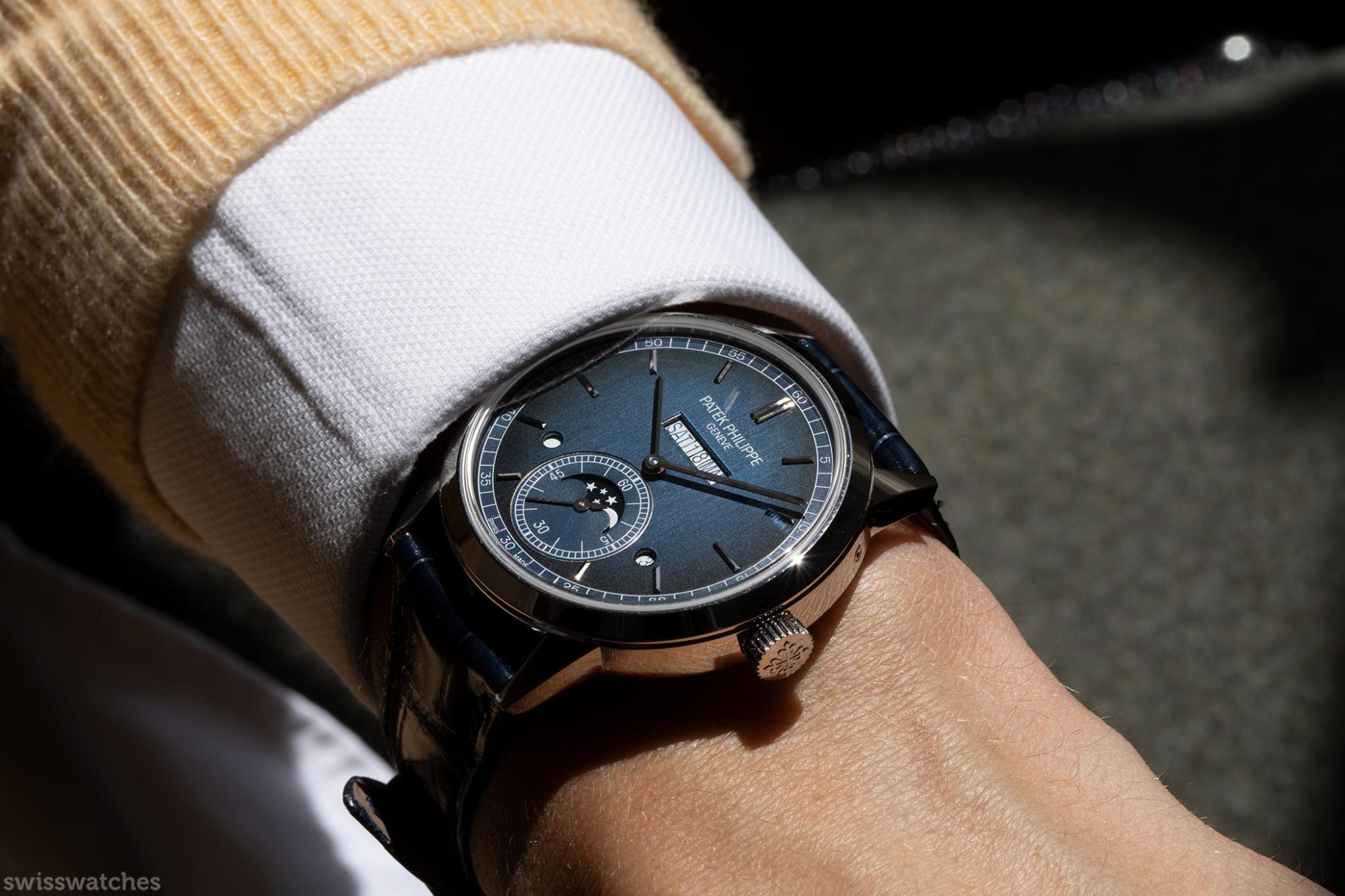
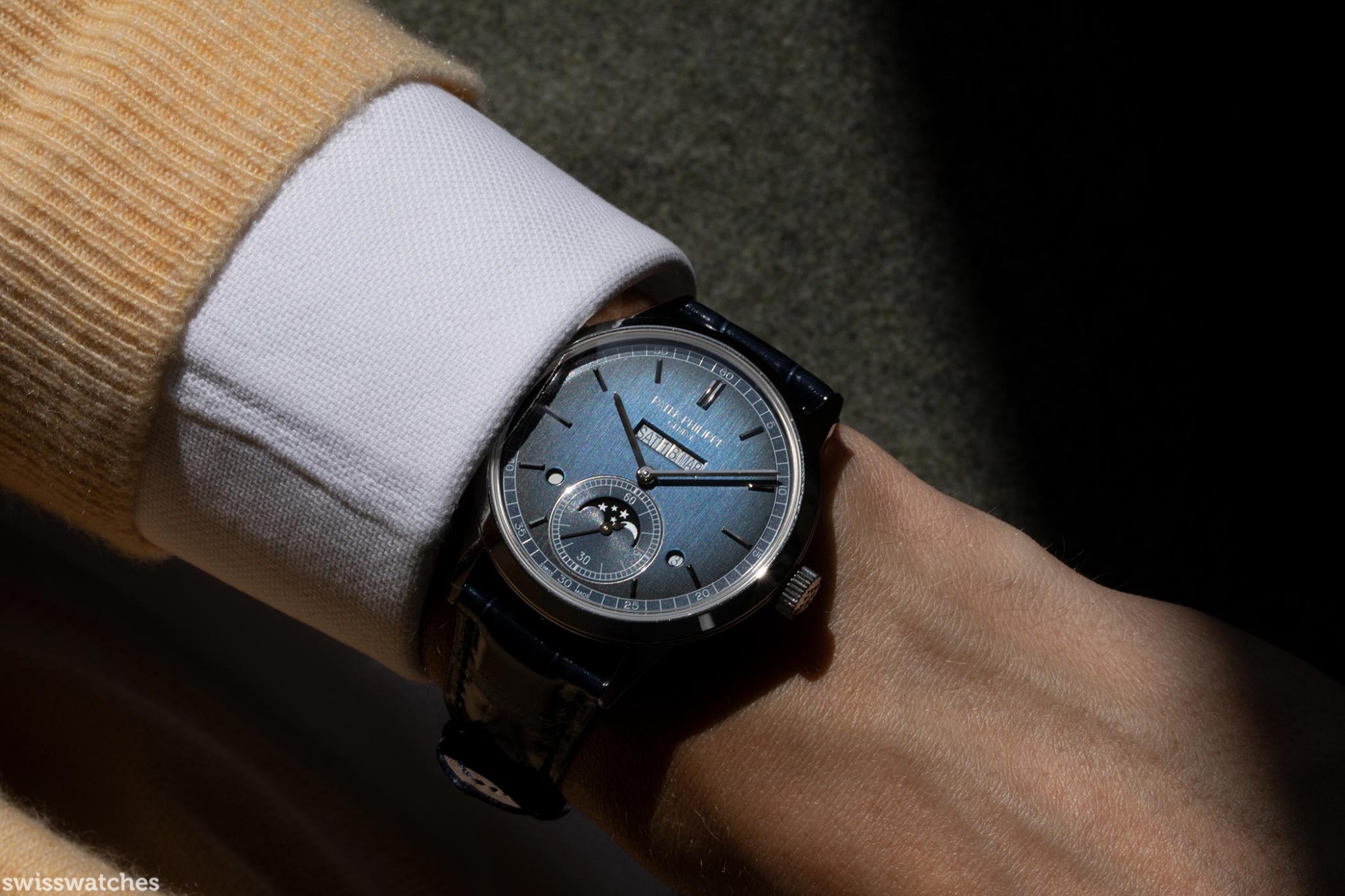
American inspiration
The Patek watchmakers take inspiration from one pocket watch in particular, which was made for its American market in 1972. It used a “à l’américaine” calendar system. This name comes from the fact that in America, the order of the date display is in reverse: month-date-day, instead of day-date-month. Until now, a wristwatch with this complete display on one level did not exist. In this respect, the Reference 5236P-001 is a first.
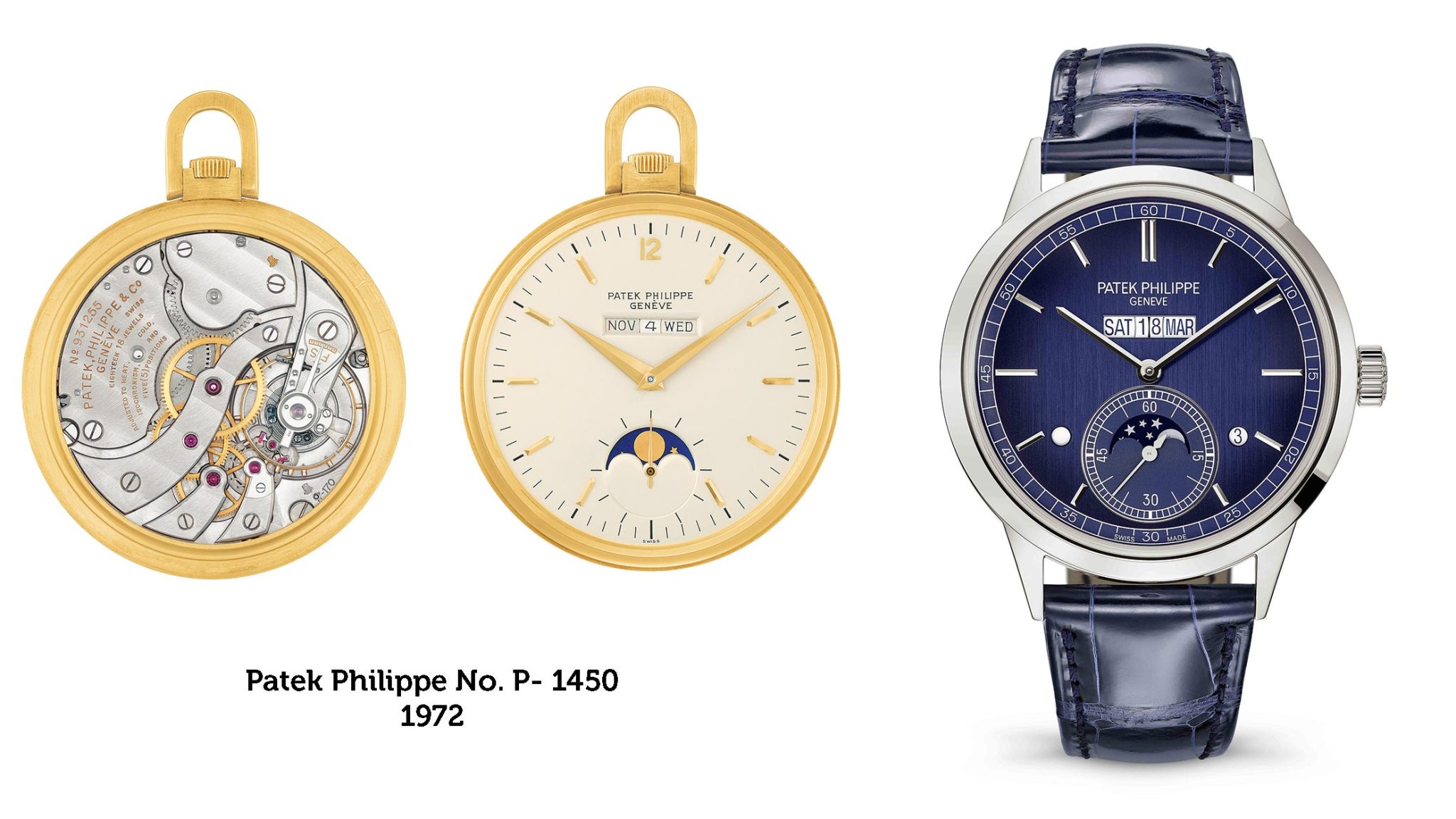
The display of the three pieces of information in a single window box is therefore unusual to see at first. However, it fits very well with the watch’s uncluttered overall design. At most, one could note that the date display in the single-digit area is a bit strange because one wants to preserve the two-digit pattern. Instead of “1”, it displays “01”, and instead of “2” it displays “02”, and so on. This is reminiscent of digital display dates, yet it does prevent a kind of “blind spot” from creating a kind of imbalance in the overall work of art – as is the case, for example, with A. Lange & Söhne models, where one window always remains completely empty from the 1st to the 9th of a month.
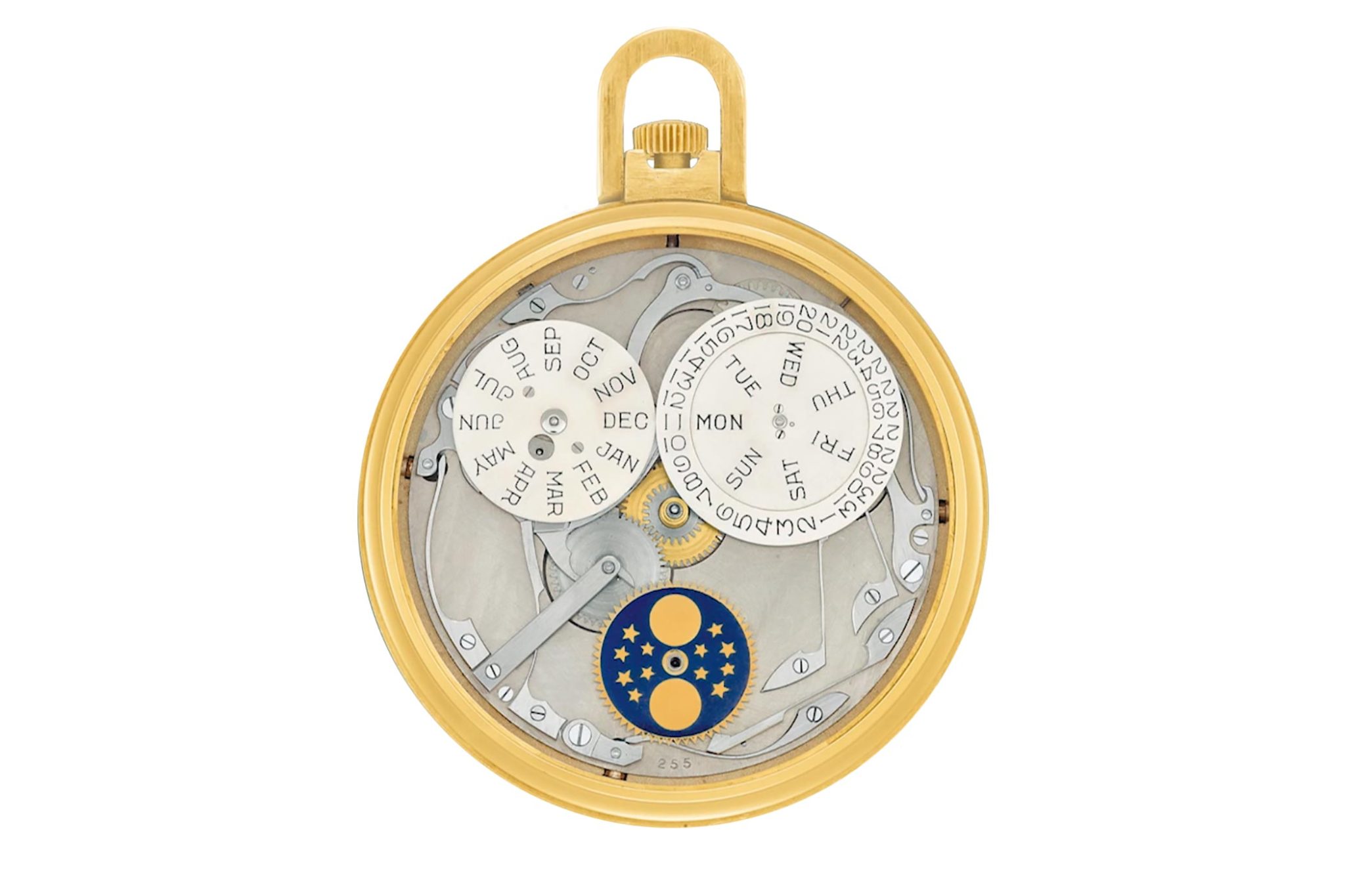

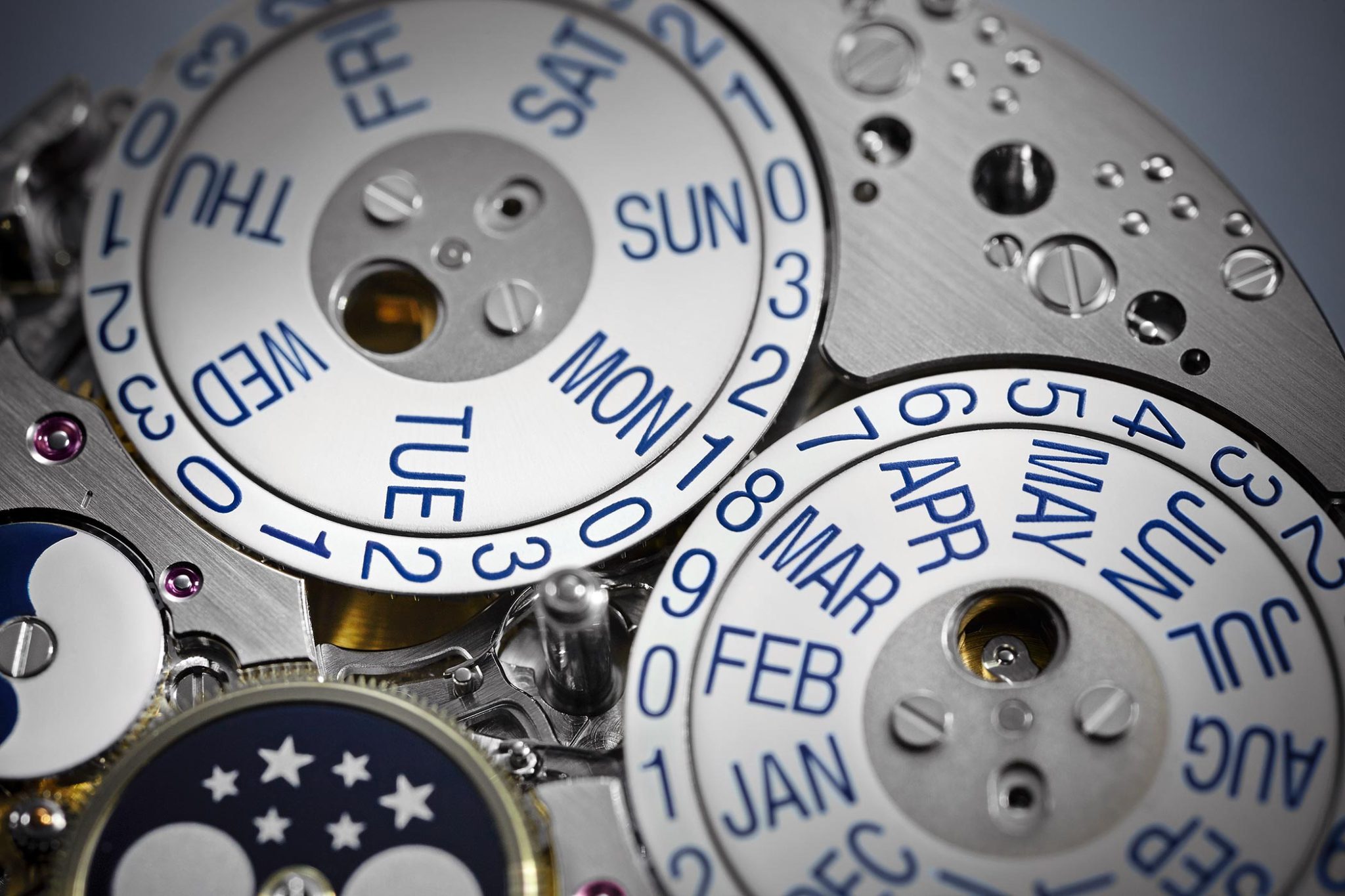
The Calibre 31-260 PS QL
The calibre of the annual calendar with regulator display, known from the Reference 5235, serves as the base for this movement. This calibre has now, however, been optimised. For the micro rotor, the heavier material of platinum is used as the oscillating weight for the first time. Patek has also expanded the movement to integrate the perpetual calendar function, displaying the day, date and month with the aid of four discs. Two of these discs are for the date display alone, while one of each of the remaining discs are for the tens or for the units. Patek Philippe is awaiting three patents for the calibre.

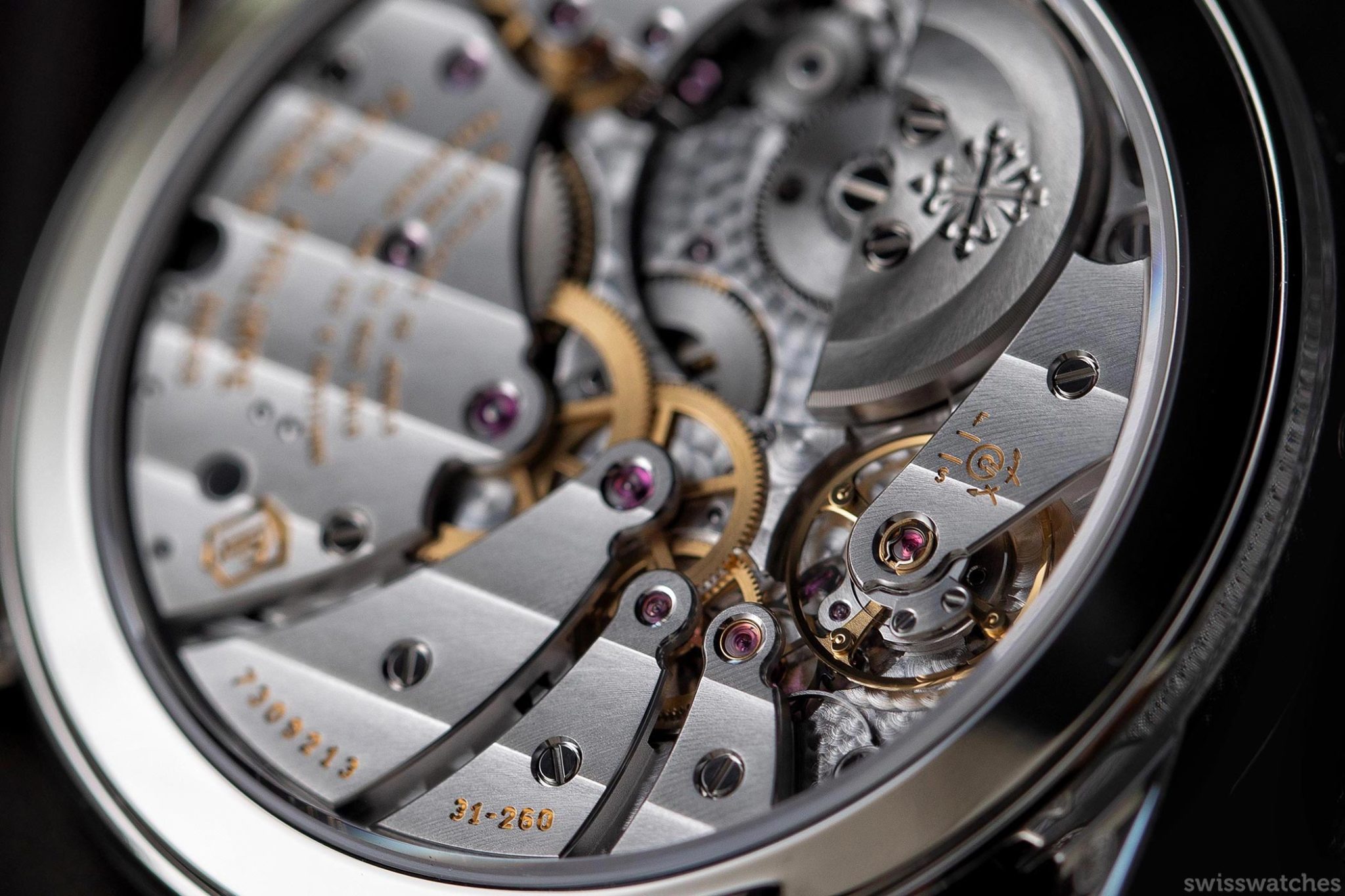
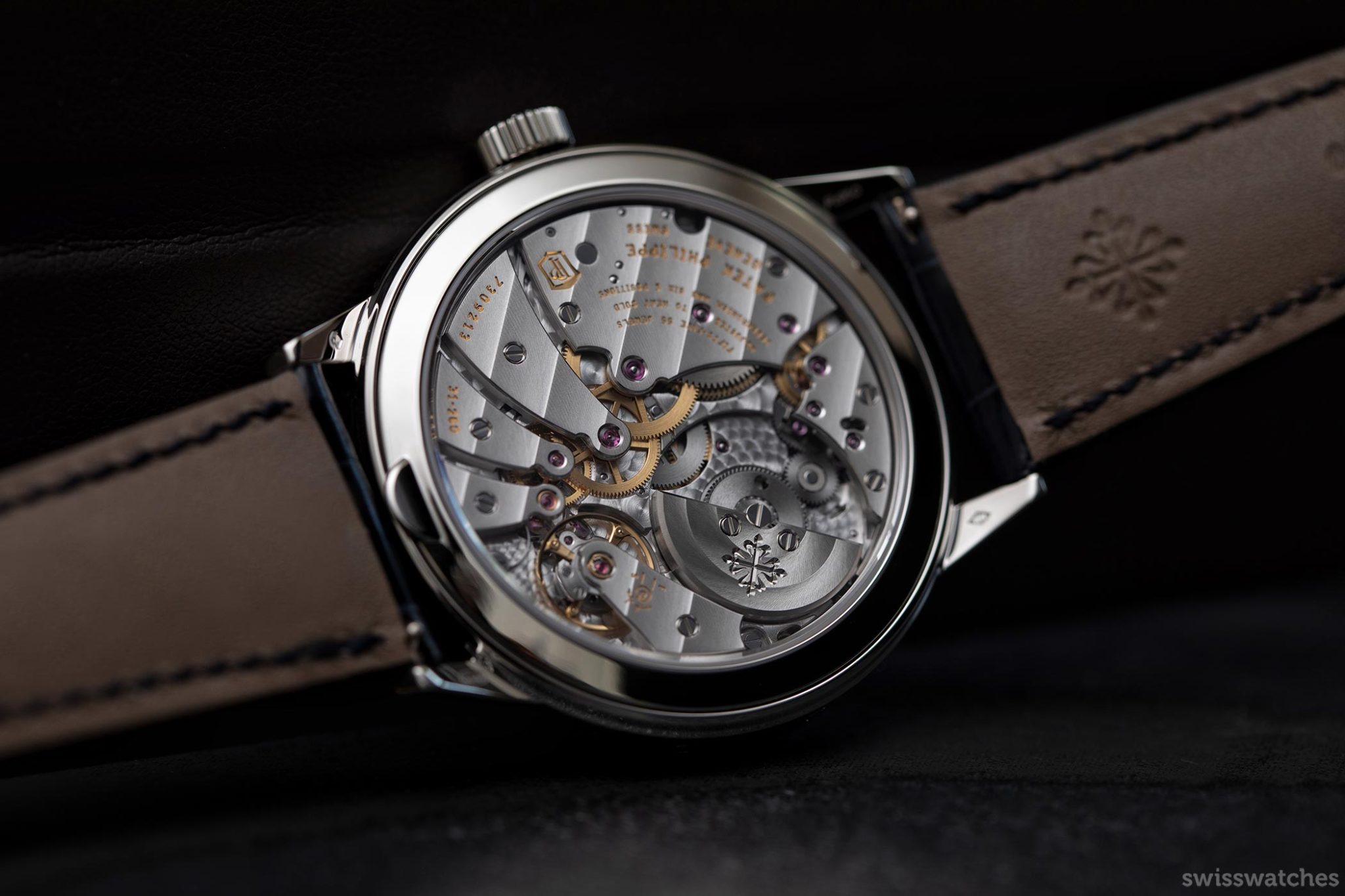
During development, several different methods of display were in discussion amongst the watchmakers. This is partly because one option was of course to display the date on a single disc with the numerals 1 to 31 like on the historical pocket watch. However, using this type of display in a wristwatch would make the typography too small and difficult to read. Therefore, Patek Philippe’s new module works so that all four discs can work independently of each other, yet still connect to each other. For example, when the date changes from the 11th to the 12th, the left-hand “1” remains stationary and only the second number changes. The watch thus knows, so to say, that from 1 to 9, from 10 to 19, from 20 to 29 and from 30 to 31, only the right disc should turn.
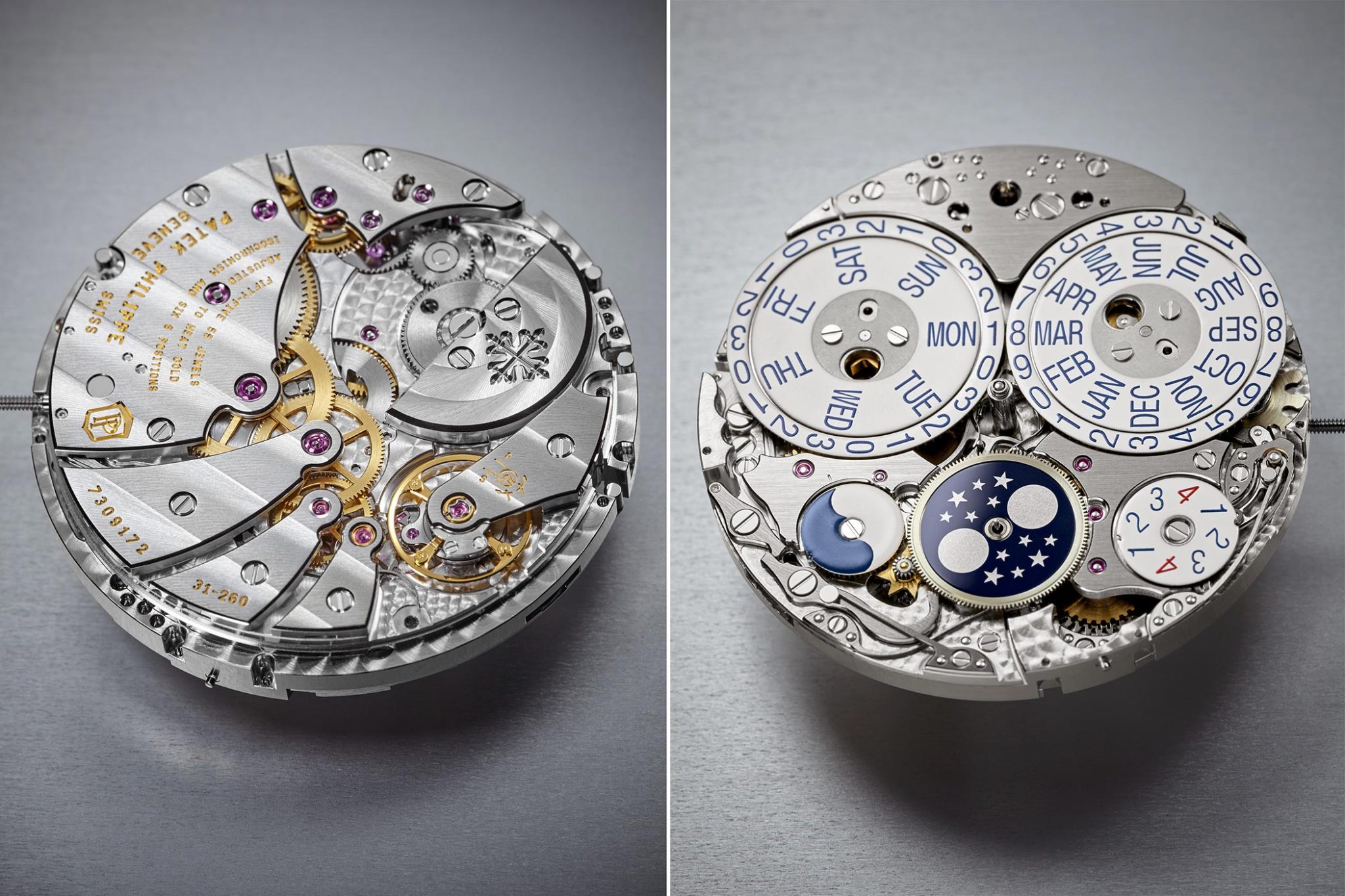
Constructing the 5236P’s perpetual calendar
The mechanism of the new perpetual calendar is constructed as an additional module on a specially manufactured plate. In this respect, the overall height of the calibre is lower than with a partially integrated mechanism. Additionally, it features 118 extra components. So that all the displays can be on one level and not overlap, Patek uses its patented system with two double ball bearings. Furthermore, to ensure that the date function runs without unwanted jumping in the event of a shock or date correction, Patek uses an “anti-double-jump” mechanism. This required two additional patents.

An indicator at 4 o’clock displays the leap year cycles while at 8 o’clock, there is a day/night indicator. The perpetual calendar 31-260 PS QL has a diameter of 34 mm and a height of 5.8 mm. This is actually just 0.72 mm more than the annual calendar with a regulator.
The target group
The fact that there are almost no other manufactures that enthusiasts regard as the guiding star of the entire haute horlogerie world is part of both the myth and success of Patek Philippe as a brand. This is a great honour. However, it also means that every new Patek product is under scrutiny – a perpetual calendar even more so. In this sense, there will be traditionalists for whom the new watch seems a little too zeitgeist-y.
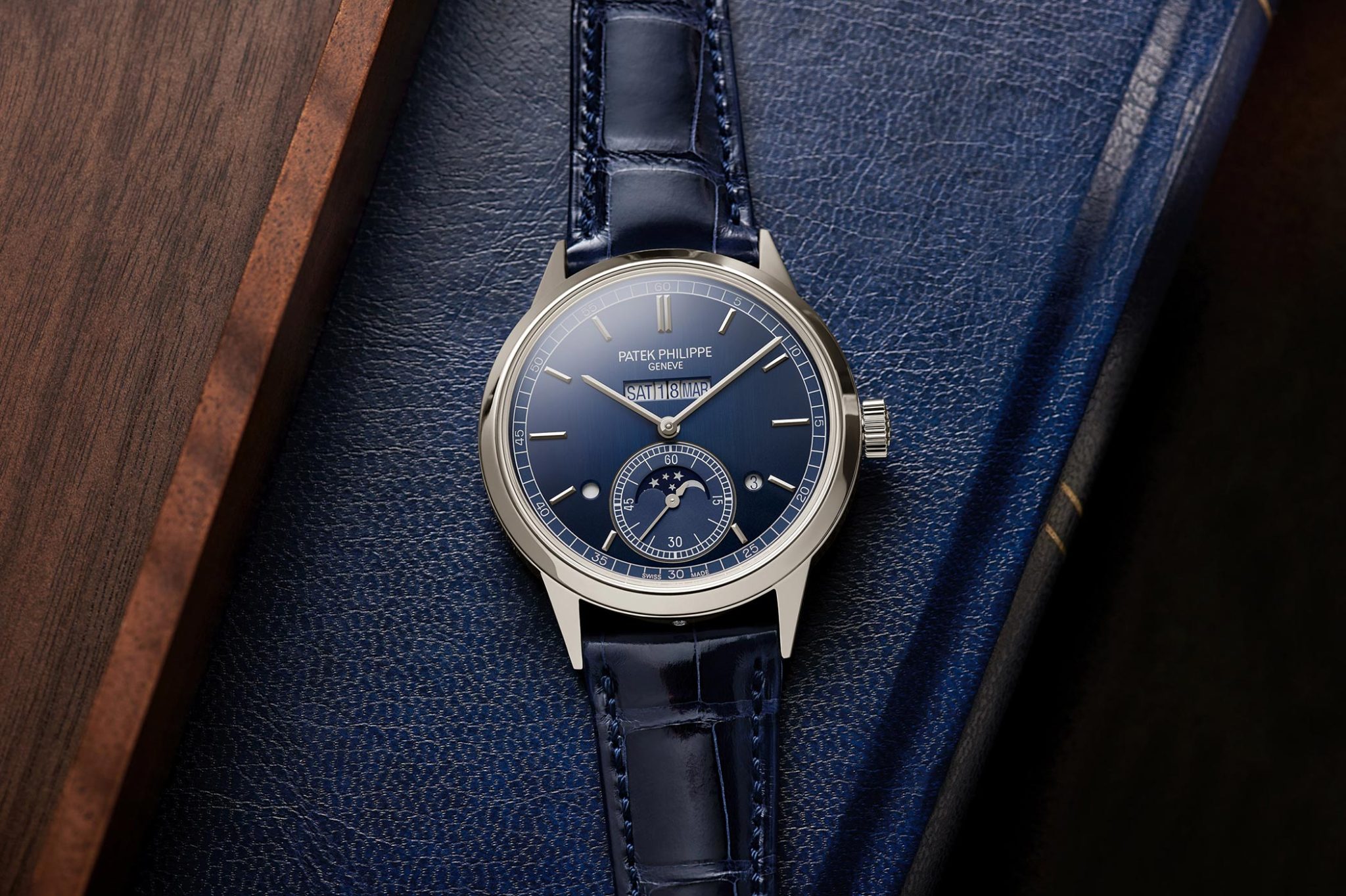
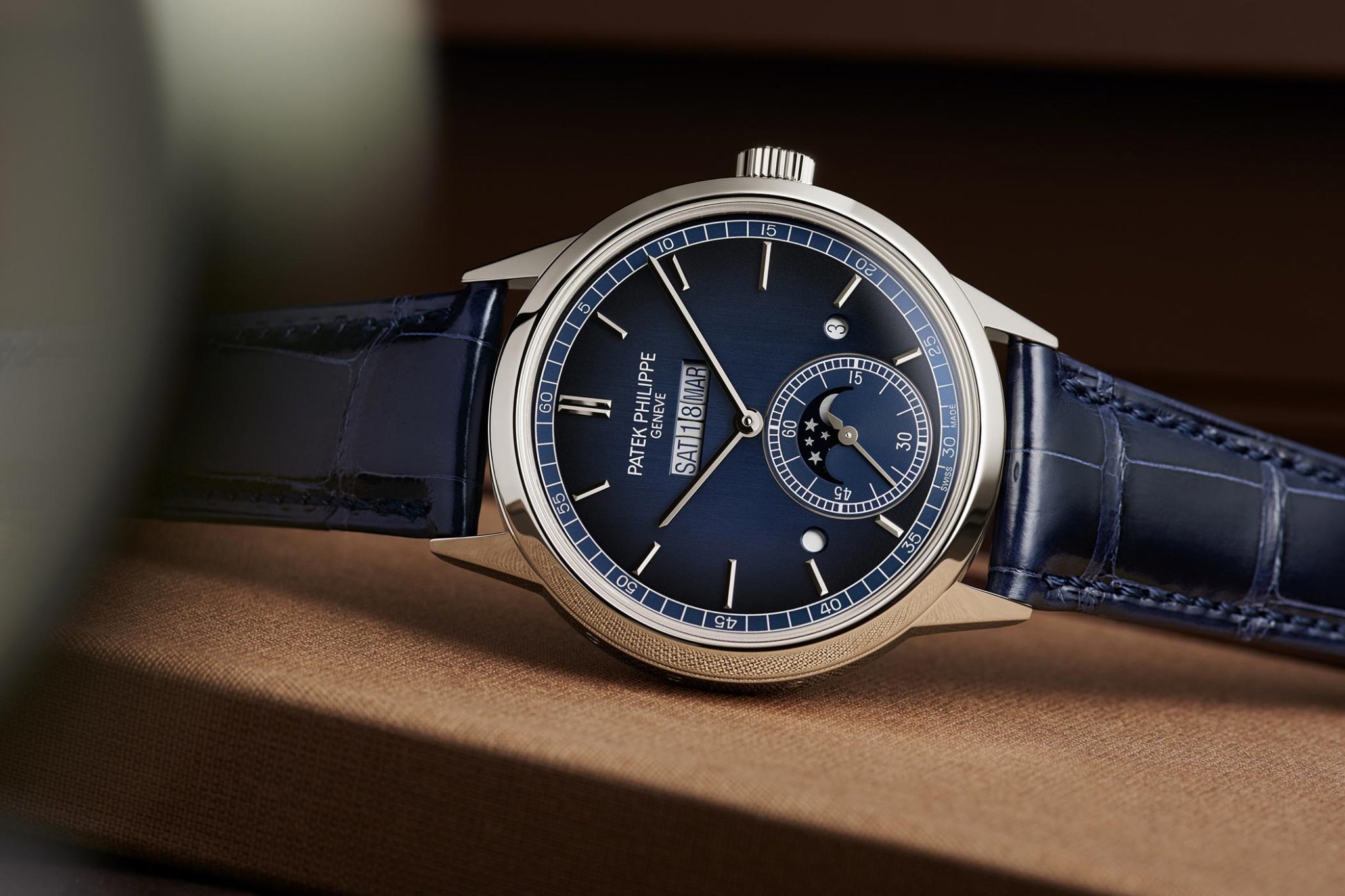
At the same time, the pendulum clock inspiration mentioned earlier has been so elegantly implemented that you can immediately see the watch in your mind’s eye on the wrists of top-earning designers, art directors, or fans of Bauhaus. Compared to the new A. Lange & Söhne Lange 1 Perpetual Calendar, the 5236 seems downright futuristic.
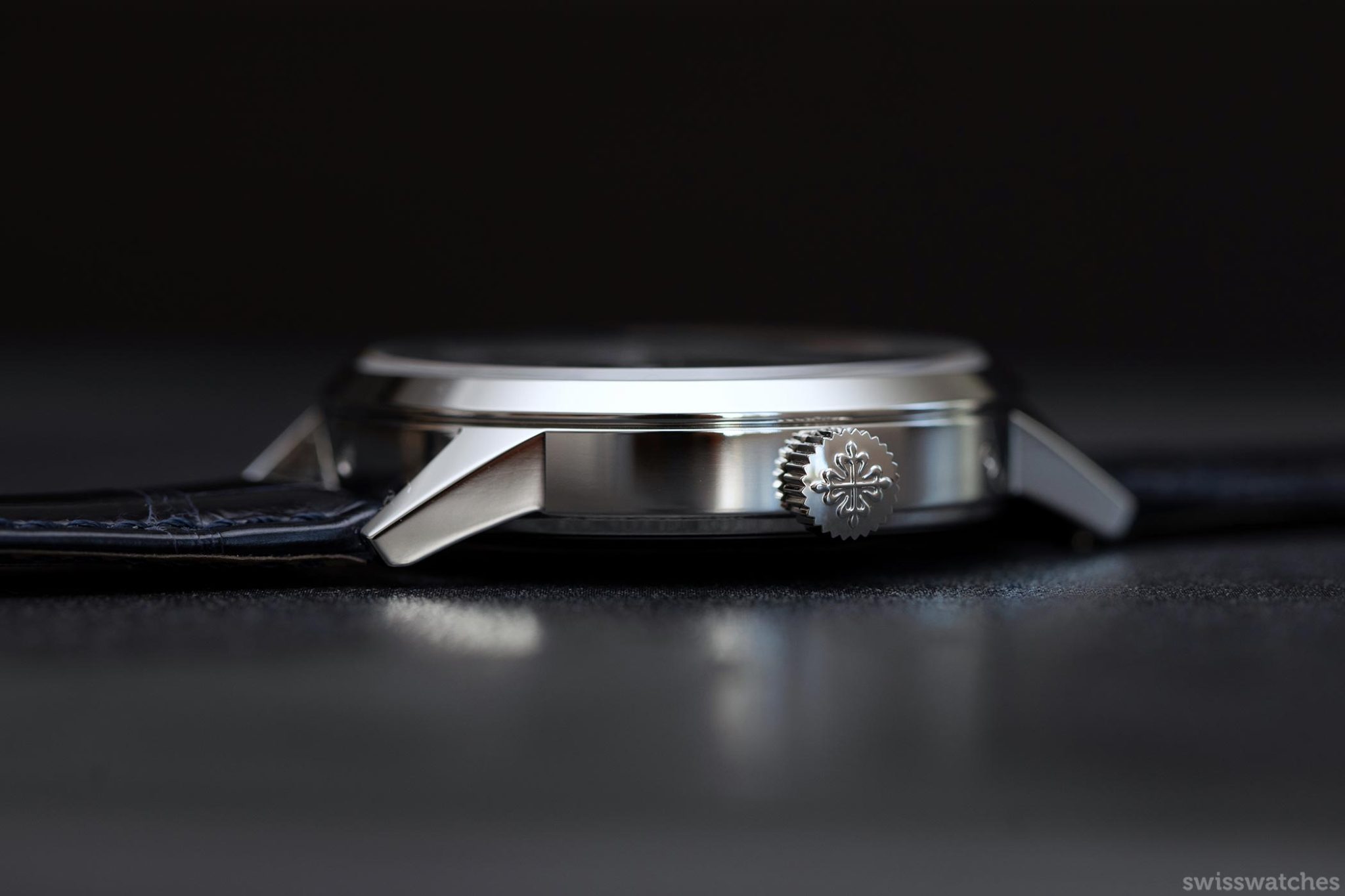
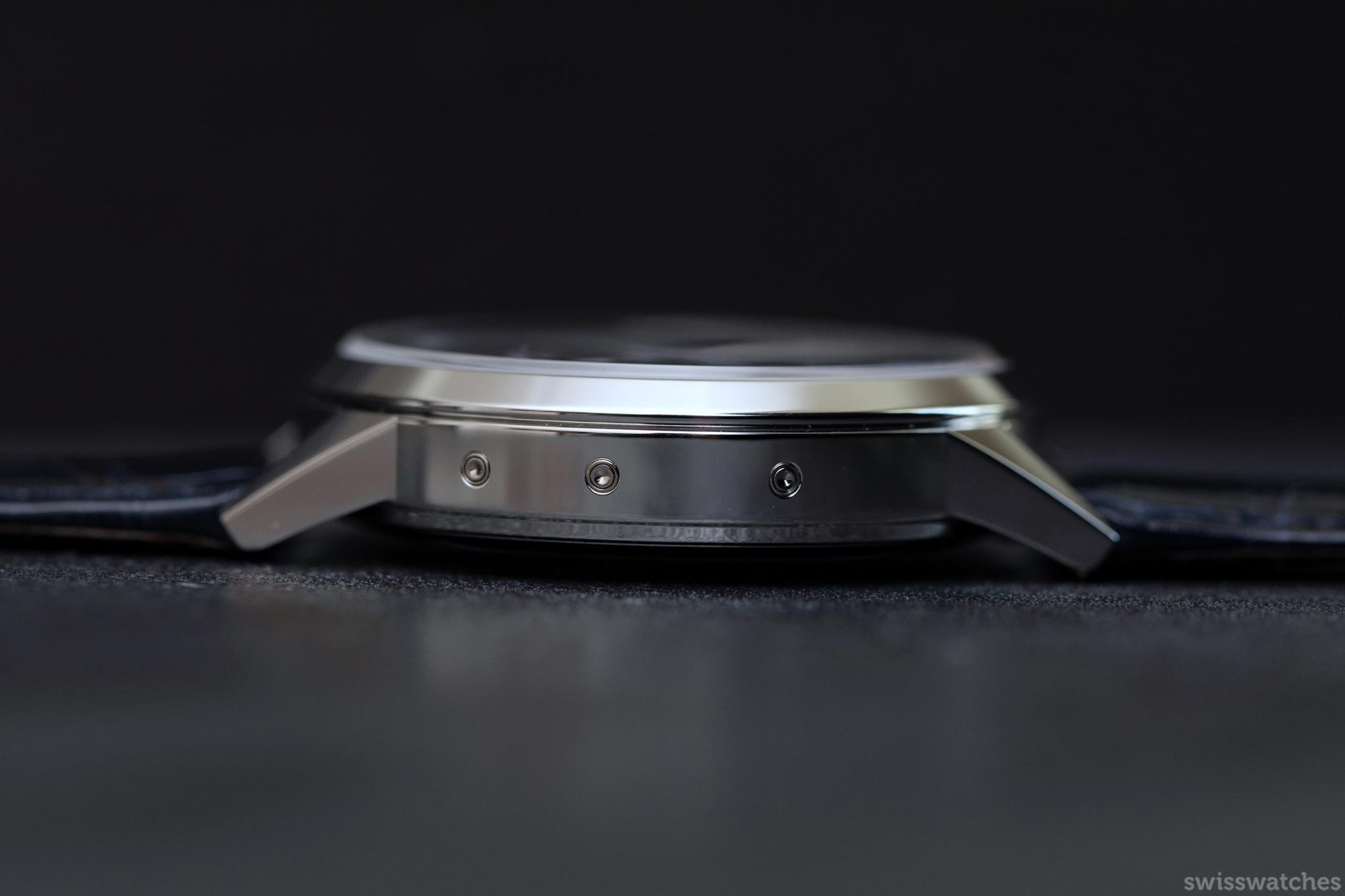
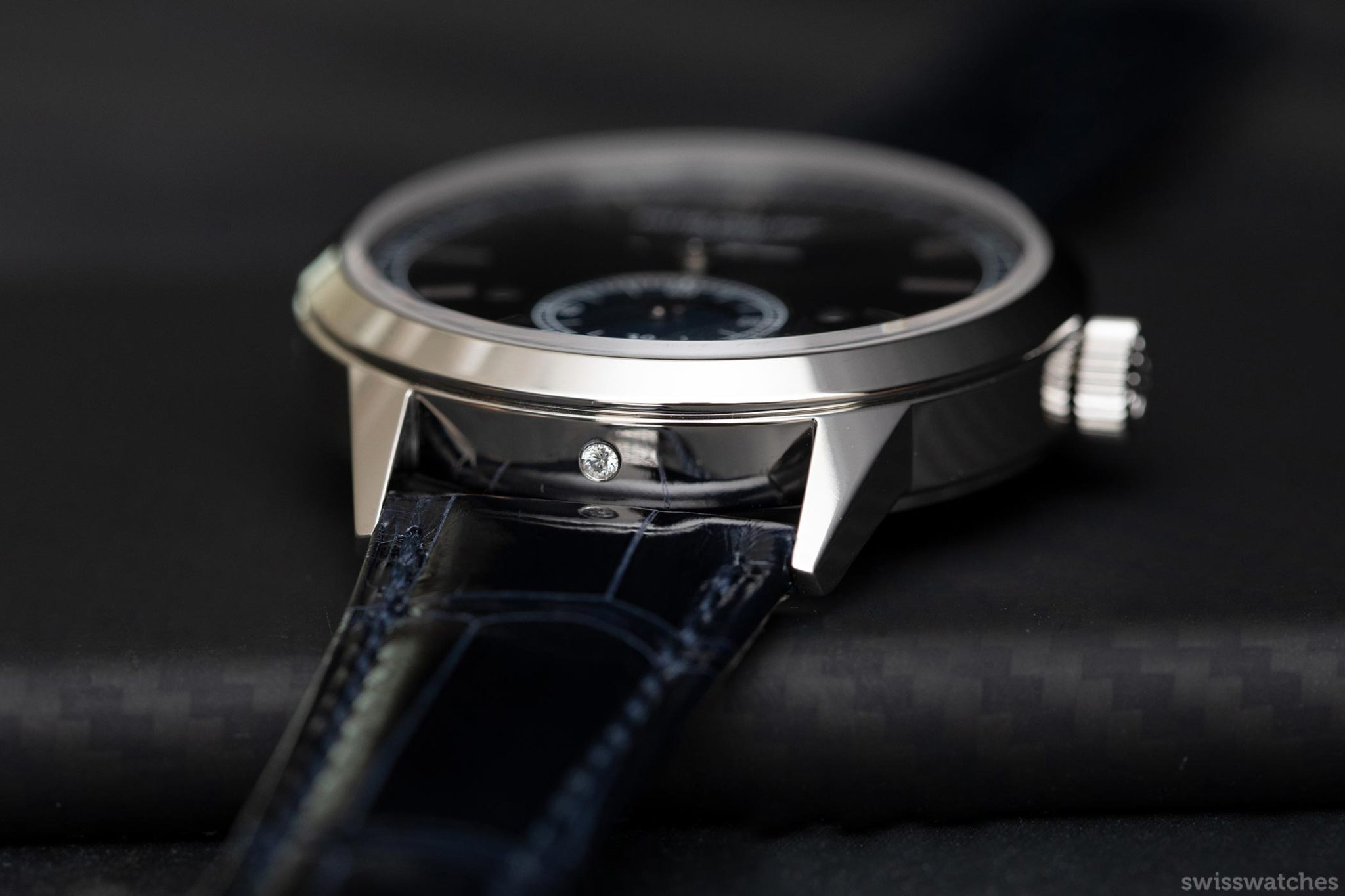
Simply in terms of craftsmanship and pricing, a Patek Philippe is probably never going to be for a primarily younger clientele. However, this model in particular is likely to appeal to those customers who might find Patek Philippe a bit too classic elsewhere in the collection.
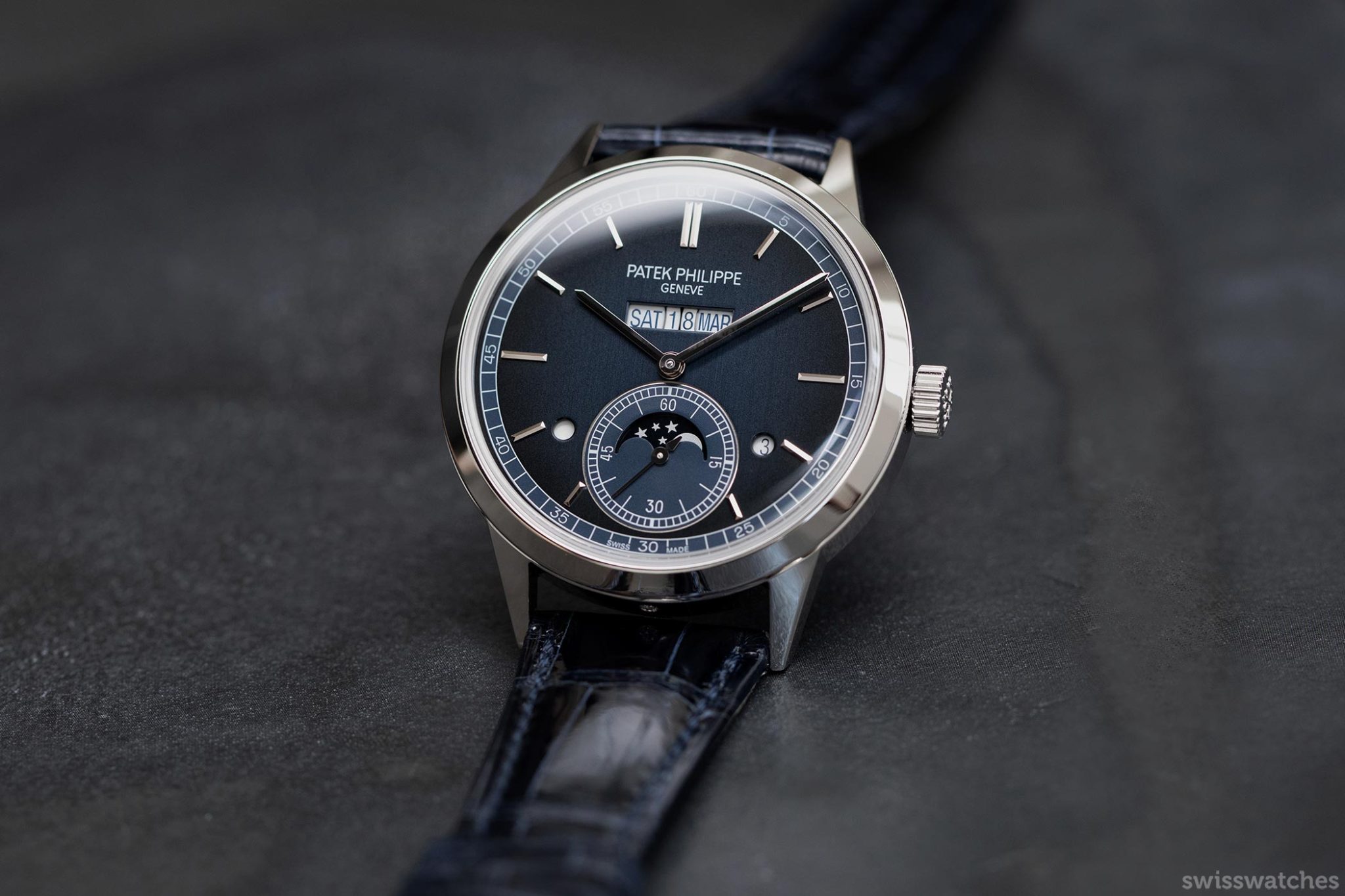
Its aesthetics mean that the Reference 5236P is one of those models which, at first glance, one might almost overlook in light of its minimalism – Almost. And yet, upon a second glance, one’s eyes linger on the dial, on the numerous small details, in which you could lose yourself for hours. Should the watch with the solid platinum case make its way to your own wrist, you will lose your heart at the very last moment. One thing we can be sure of: as a perpetual calendar, this watch not only has a great tradition, but also has what it takes to become an object of desire.
The patents:
Display mechanism (ball-bearing display)
This display system consisting of two “double ball bearings” makes it possible to display all the perpetual calendar displays on one line in the same plane and without overlapping.
Shock absorber mechanism and/or anti-double jump for watch movements.
To ensure the synchronism of the two date discs, an “anti-double jump” mechanism has been developed. It prevents the single disc from jumping in the event of a shock or when correcting the date.
Date: Change from 31 to 01
This mechanism ensures that the unit stays in place when changing from the 31st to the 1st of the following month. This is provided by a 31-point star with 2 of the teeth removed.
FEATURES
Height: 11.07 mm
max. 48 hours.



